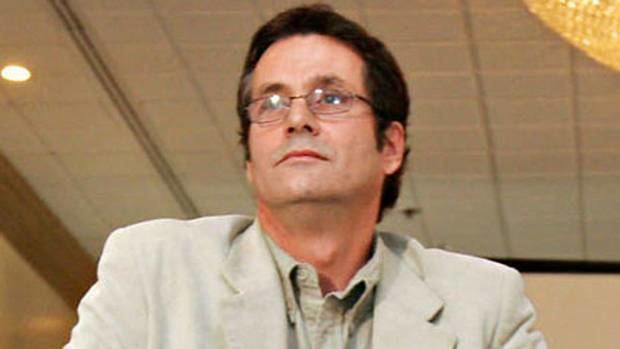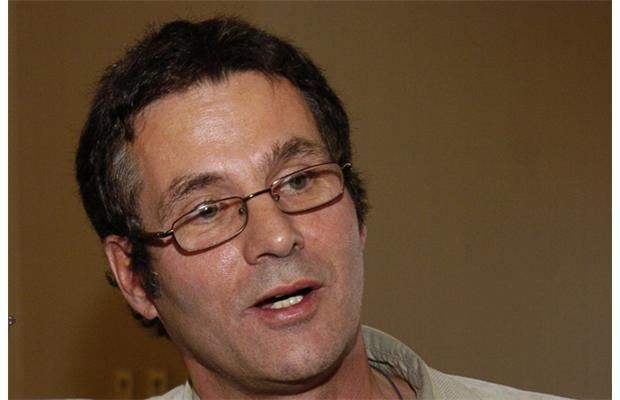Name David Milgaard | ||
 | ||
Similar People Larry Fisher, Guy Paul Morin, Steven Truscott, Donald Marshall - Jr, James Driskell | ||
The david milgaard case 1970 1994
David Milgaard (born July 7, 1952) is a Canadian who was wrongfully convicted for the rape and murder of nursing assistant Gail Miller. He was released and compensated after spending 23 years in prison. He was born in Winnipeg. As of 2015, he lives in Calgary and is employed as a community support worker.
Contents
- The david milgaard case 1970 1994
- David milgaard
- Arrest and trial
- Review and release
- Inquiry
- Real killer
- In popular culture
- References

David milgaard
Arrest and trial

In January 1969, 16-year-old Milgaard and his friends Ron Wilson and Nichol John took a trip across Canada.

While the friends were in Saskatoon, a 20-year-old nursing student, Gail Miller, was found dead on a snowbank. At the time Milgaard and his friends were picking up their friend Albert Cadrain, whose family was renting out their basement apartment to Larry Fisher.

Tipped off by Cadrain, who admitted he was mostly interested in the $2000 reward for information, British Columbia police arrested Milgaard in May 1969 and sent him back to Saskatchewan, where he was charged with Miller's murder. Cadrain testified he had seen Milgaard return the night of Miller's murder in blood-stained clothing.
Wilson and John were also called to testify against Milgaard. They had told police they had been with him the entire day and that they believed him to be innocent but changed their stories for the court. Wilson later recanted his testimony, saying he had been told he was under suspicion and wanted to alleviate the pressure on himself.
Milgaard was convicted of murder and sentenced to life in prison on January 31, 1970, exactly a year after Miller's murder. He was 17 years old. Twenty-three years later he was exonerated.
Milgaard wrote of the hardships he faced in prison, especially the difficulty of having his case reviewed, in his foreword to Gary Botting's book Wrongful Conviction in Canadian Law (Toronto: LexisNexis, 2010).
Review and release
Milgaard appealed his conviction several times but was blocked both by bureaucracy and by a justice system unreceptive to those unwilling to admit their guilt. His formal application was completed in 1988 but was not considered until 1991 after Liberal MP Lloyd Axworthy addressed Parliament: "...I wish to speak of a travesty of justice. I speak of the plight of David Milgaard who has spent the last 21 years of his life in prison for a crime he did not commit. Yet for the last two years, the Department of Justice has been sitting on an application to reopen his case. But rather than review these conclusive reports, rather than appreciate the agony and trauma of the Milgaard family, the Minister of Justice refuses to act."
Parliament acted, and rejected Milgaard's application for a conviction review. In her 1996 autobiography Time and Chance, former prime minister (then justice minister) Kim Campbell devotes a chapter to Milgaard. In it she says one of the main reasons for the delay in acting on the request to reopen his case was because Milgaard's lawyers kept adding new documentation to the file, thereby slowing down the start of her review.
Inquiry
On September 30, 2003, the Saskatchewan government announced a royal commission would investigate Milgaard's wrongful conviction, and on February 20, 2004, Justice Edward P. MacCallum was announced as the commissioner. Douglas Hodson was later appointed as commission counsel.
On September 26, 2008, the Saskatchewan Minister of Justice, Don Morgan, released the findings of the Milgaard inquiry. Among its recommendations were a call for the federal government to create an independent body to review allegations of wrongful conviction. The report noted that if such a body had existed, Milgaard might have been released from jail years before he was.
Linda Fisher, ex-wife of Larry Fisher, visited the Saskatoon police department in 1980. She told the police that she believed her former husband had likely killed Miller. The Saskatoon police department did not follow up on her statement. The inquiry report released by MacCallum states that "[w]hile MacCallum noted that Milgaard's family members mounted a formidable public awareness campaign, their efforts also created tension and resentment within the police and the Crown's office." This is seen by some as an excuse for the failure of the Saskatoon police to investigate Larry Fisher.
Real killer
Larry Fisher lived in the neighbourhood where Miller was raped and murdered but at the time he was not seriously considered as a suspect.
Fisher was arrested on July 25, 1997, in Calgary. He was convicted on November 22, 1999, and sentenced to life in prison on January 4, 2000. Due to the laws at the time of the crime, however, he was eligible to apply for parole in 10 years, rather than the current 25, after the sentence. Before this conviction, Fisher had served 23 years for numerous rapes in Winnipeg (Manitoba), Saskatoon and North Battleford (Saskatchewan). Fisher was never paroled, dying in prison in 2015.
In popular culture
Today, the Milgaard case has been the subject of three movies: the 1992 documentary The David Milgaard Story, directed by Vic Sarin, the 1999 docudrama Milgaard, directed by Stephen Williams and starring Ian Tracey, and in an episode of the documentary series Crime Stories, produced by Partners in Motion.
The song "Wheat Kings" by The Tragically Hip (from their 1992 album Fully Completely) contains references to the story. This song was rated the best Tragically Hip song of all-time by CBC readers in a 2016 poll.
Canadian artist David Collier described the Milgaard case in comics form in his 2000 book Surviving Saskatoon.
